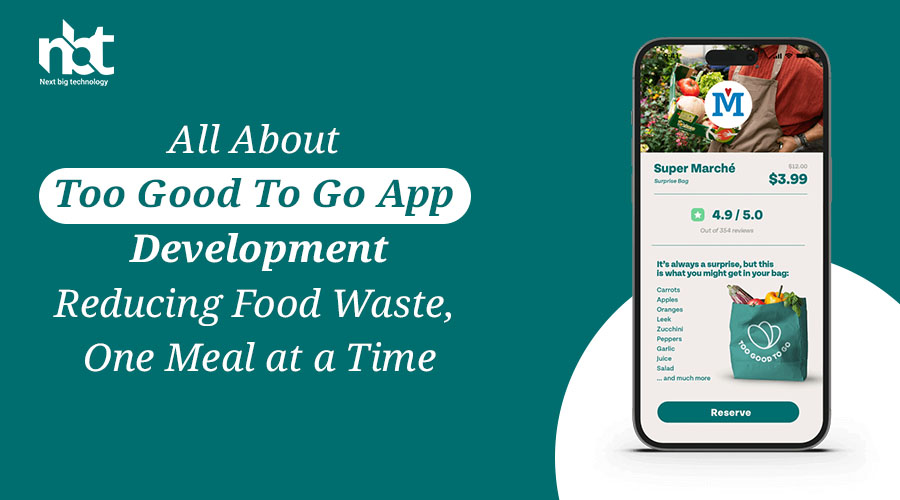Introduction:
Too Good To Go is a popular mobile app that aims to combat food waste by connecting users with surplus food from local restaurants and stores at discounted prices. The app provides a win-win solution by allowing users to enjoy delicious meals at affordable prices while reducing food waste. If you’re interested in developing your own food waste reduction app like Too Good To Go, this comprehensive guide is for you. In this article, we will explore the key features of the Too Good To Go app, the technology stack required, and the step-by-step process to develop a similar app. Let’s dive in and make a positive impact on the environment!
I. Understanding Too Good To Go App Development:
- Overview of Too Good To Go:
- Too Good To Go is a mobile app that connects users with local restaurants, cafes, bakeries, and grocery stores to purchase surplus food at discounted prices. The app aims to reduce food waste by allowing users to rescue food that would otherwise be thrown away.
- Key Features of the Too Good To Go App:
- Surplus Food Listings: The app displays a list of participating restaurants and stores that have surplus food available for purchase.
- Time-Limited Offers: Users can browse available food offers, which are typically time-limited, and make a purchase within a specified pickup window.
- User Reviews and Ratings: Users can provide feedback and ratings on their food purchases, helping others make informed decisions.
- In-App Payments: The app supports secure in-app payments, allowing users to conveniently complete transactions.
- Pickup Instructions: Participating establishments provide pickup instructions within the app, ensuring a smooth pickup experience for users.
- Sustainability Impact: The app tracks and displays the amount of food waste prevented and the environmental impact of users’ purchases.
II. Technology Stack for Too Good To Go App Development:
- Front-End Development:
- Native iOS Development: Swift programming language, Xcode IDE, UIKit framework.
- Native Android Development: Java or Kotlin programming language, Android Studio IDE, Android SDK.
- Back-End Development:
- Server-Side Language: Node.js, Python, or Ruby for server-side development.
- Web Framework: Express.js, Django, or Ruby on Rails for building APIs and handling server-side logic.
- Database: PostgreSQL, MySQL, or MongoDB for data storage.
- Cloud Services: Amazon Web Services (AWS) or Google Cloud Platform (GCP) for hosting and scalability.
- APIs and Integrations:
- Geolocation Services: Integration with geolocation services like Google Maps to enable location-based search and pickup instructions.
- Payment Gateway Integration: Integration with secure payment gateways like Stripe or PayPal for seamless and secure transactions.
- Push Notification Services: Integration with platforms like Firebase Cloud Messaging or Apple Push Notification Service for real-time order updates.
III. Steps to Develop a Too Good To Go-Like App:
- Define Your App’s Objectives:
- Determine the primary goals and target audience for your food waste reduction app. Clearly define how your app will connect users with surplus food and promote sustainability.
- UI/UX Design:
- Create wireframes and design mockups for your app’s user interface and user experience. Focus on intuitive navigation, visually appealing layouts, and seamless interactions.
- Front-End Development:
- Develop the front-end of your app using the chosen technology stack. Implement features such as food listings, time-limited offers, user reviews, and in-app payments.
- Back-End Development:
- Set up the server-side infrastructure using the chosen programming language and web framework. Implement the necessary APIs and services for user authentication, food listings, and transaction management.
- Geolocation Services:
- Integrate geolocation services to enable location-based search for surplus food offers. Use APIs to display participating establishments on a map and provide pickup instructions.
- Payment Integration:
- Integrate a secure payment gateway to facilitate seamless and secure transactions within the app. Ensure compliance with industry standards for data security.
- User Ratings and Feedback:
- Develop a system for users to provide ratings and feedback on their food purchases. Implement features that allow users to share their experience and recommendations.
- Sustainability Tracking:
- Implement mechanisms to track and display the environmental impact of users’ purchases. Show users the amount of food waste prevented and encourage them to make a positive impact.
- Testing and Quality Assurance:
- Conduct comprehensive testing to ensure the app’s functionality, performance, and user experience. Test on various devices, screen sizes, and operating systems to ensure compatibility.
- Deployment and Launch:
- Deploy your app to the respective app stores (App Store and Google Play Store) and make it available for users to download and install. Promote your app through digital marketing channels and raise awareness about food waste reduction.
IV. Conclusion:
Developing a food waste reduction app like Too Good To Go requires a thoughtful approach, user-centric design, and robust implementation. By following the steps outlined in this guide and leveraging the appropriate technology stack, you can create an app that connects users with surplus food while making a positive impact on the environment. Remember to focus on intuitive user experiences, seamless transactions, and sustainability tracking to drive user engagement and encourage responsible food consumption. Embrace the power of Too Good To Go app development and contribute to the global movement of reducing food waste, one meal at a time.

















